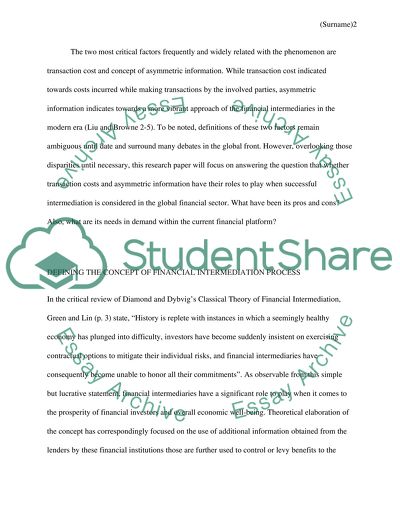Cite this document
(“What is the role of transactions costs and asymmetric information in Essay”, n.d.)
What is the role of transactions costs and asymmetric information in Essay. Retrieved from https://studentshare.org/miscellaneous/1683348-what-is-the-role-of-transactions-costs-and-asymmetric-information-in-the-financial-intermediation-process-in-your-answer-make-reference-to-the-theories-of-financial-intermediation-and-the-problems-of-adverse-selection-and-moral-hazard
What is the role of transactions costs and asymmetric information in Essay. Retrieved from https://studentshare.org/miscellaneous/1683348-what-is-the-role-of-transactions-costs-and-asymmetric-information-in-the-financial-intermediation-process-in-your-answer-make-reference-to-the-theories-of-financial-intermediation-and-the-problems-of-adverse-selection-and-moral-hazard
(What Is the Role of Transactions Costs and Asymmetric Information in Essay)
What Is the Role of Transactions Costs and Asymmetric Information in Essay. https://studentshare.org/miscellaneous/1683348-what-is-the-role-of-transactions-costs-and-asymmetric-information-in-the-financial-intermediation-process-in-your-answer-make-reference-to-the-theories-of-financial-intermediation-and-the-problems-of-adverse-selection-and-moral-hazard.
What Is the Role of Transactions Costs and Asymmetric Information in Essay. https://studentshare.org/miscellaneous/1683348-what-is-the-role-of-transactions-costs-and-asymmetric-information-in-the-financial-intermediation-process-in-your-answer-make-reference-to-the-theories-of-financial-intermediation-and-the-problems-of-adverse-selection-and-moral-hazard.
“What Is the Role of Transactions Costs and Asymmetric Information in Essay”, n.d. https://studentshare.org/miscellaneous/1683348-what-is-the-role-of-transactions-costs-and-asymmetric-information-in-the-financial-intermediation-process-in-your-answer-make-reference-to-the-theories-of-financial-intermediation-and-the-problems-of-adverse-selection-and-moral-hazard.


